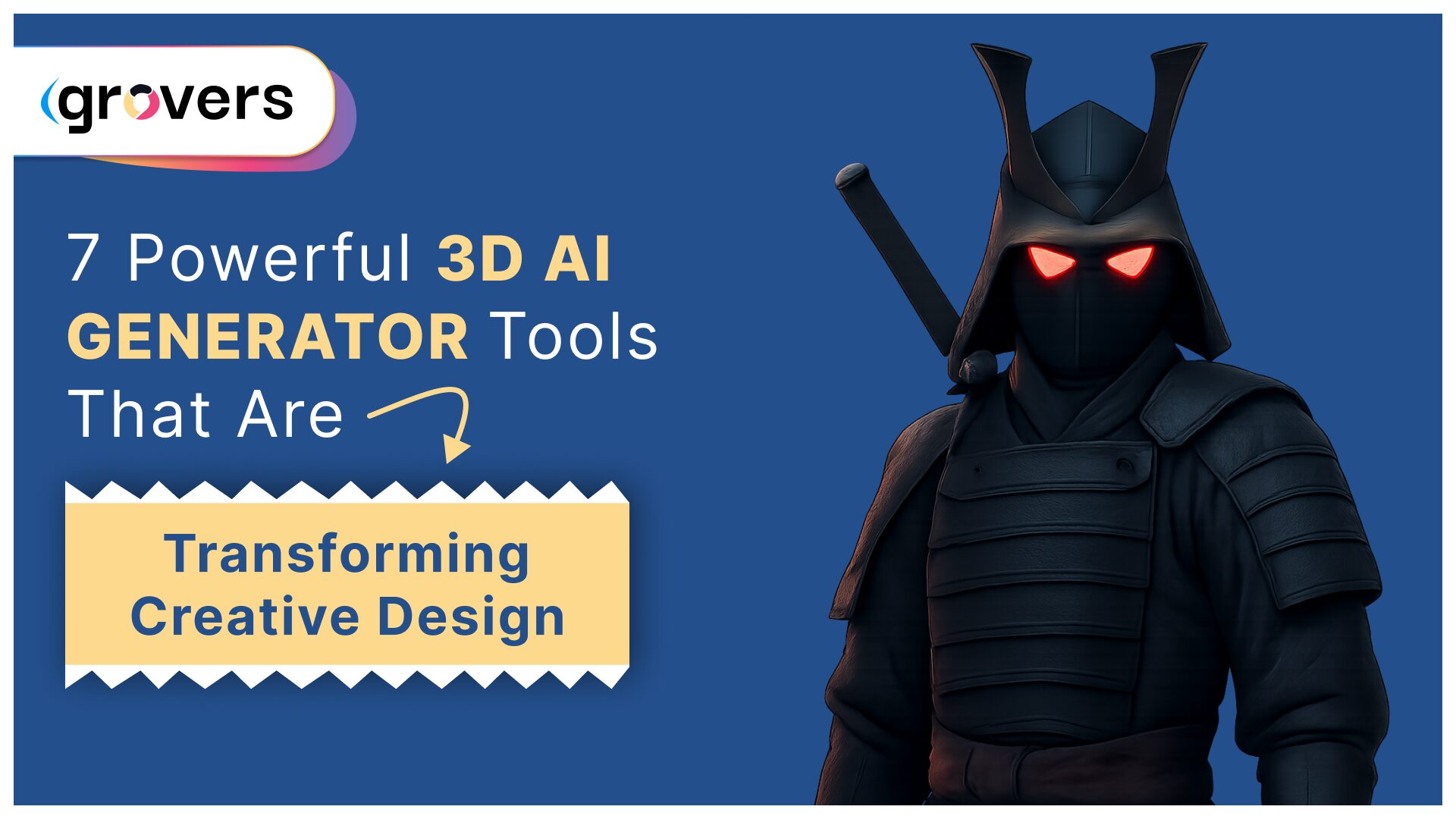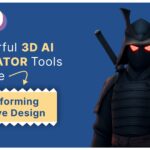The world of 3D design has undergone a massive transformation in 2025. The ability to make beautiful three-dimensional models no longer costs years of education or high-end software packages. Thanks to advanced 3d ai generator tools, anyone can now transform simple text prompts or images into professional-quality 3D models within minutes.
This revolution has opened doors for game developers, product designers, marketers, and creative professionals who need quick access to generated 3d models. Whether you’re prototyping a new product, creating assets for a video game, or designing marketing materials, these tools deliver results that would have taken traditional methods hours or even days to achieve.
The industry of ai 3d generator tools has boomed over the last few years, now featuring a wide range of basic model creation to more advanced texture mapping and animation tools. The tools are highly complementary, and determining which one is most appropriate to your needs and workflow is essential.
Understanding 3D AI Generation Technology
Modern 3d ai generator platforms leverage sophisticated machine learning algorithms trained on millions of 3D models and textures. The systems grasp spatial dependency, material properties and geometry principles in a way that enables them to produce realistic three-dimensional objects based on descriptions.
The technology behind AI-generated 3d models has advanced significantly in recent years. Modern systems are able to process rich input, keep the topology reliable, and produce models that can be used easily in professional environments, without demanding additional post-production.
Most platforms allow using multiple input techniques, such as text-into-3D, image-into-3D, and motion-capture through a video. This flexibility makes these tools useful to many sectors, including entertainment and games, architecture and product development.
Top 7 3D AI Generator Tools for 2025
There are many 3d AI generator tools, however we have finalized the top 7 3D AI Generator tools as discussed below:
1. Meshy AI
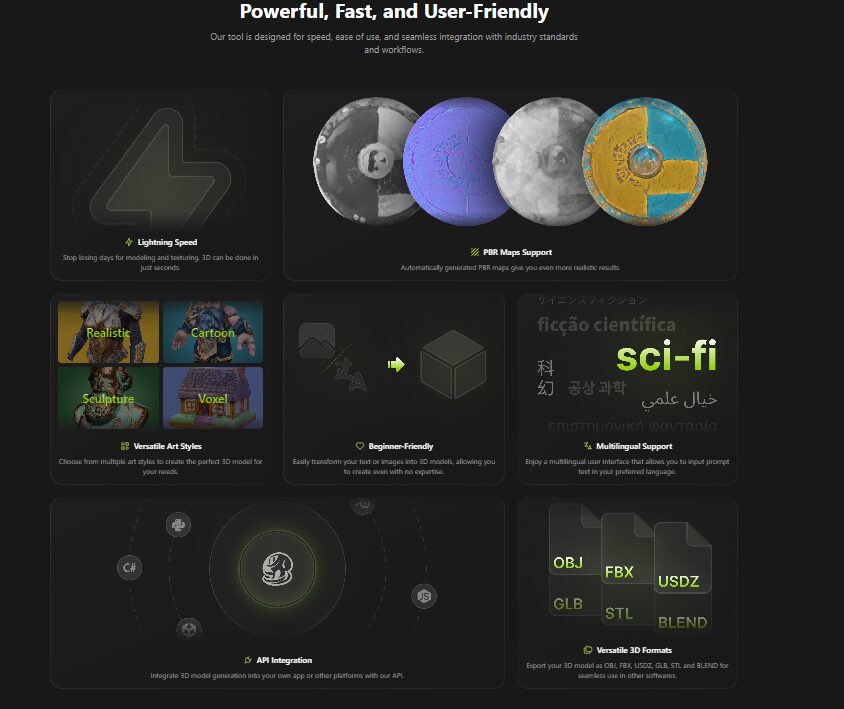
Meshy AI is now favoured by many professionals because of its impressive speed of generation as well as the quality of generation that it offers in Meshy 4. The platform is powerful in terms of turning textual instructions and reference images into well-modelled 3D representations very quickly.
Key Features:
- Lightning-fast generation times (under 2 minutes for most models)
- Advanced texture quality and topology optimization
- Built-in rigging and animation capabilities for characters
- Support for both biped and quadruped character types
Best For: Game developers, animation studios, and creators who need quick turnaround times without compromising quality. The platform’s speed makes it ideal for rapid prototyping and concept development.
Pricing: Offers both free and premium tiers, with the free version providing basic generation capabilities and paid plans unlocking advanced features and higher resolution outputs.
2. 3D AI Studio
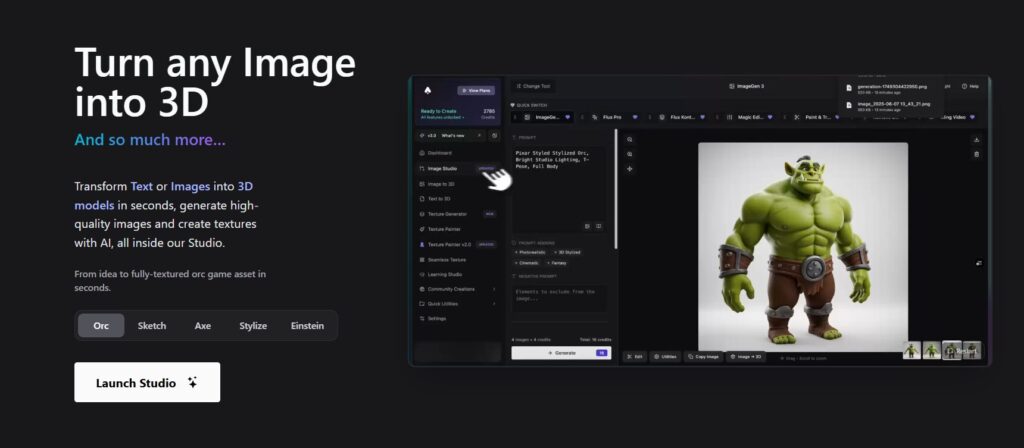
The distinguishing element of the AI Studio is its versatile nature, as the offered features of text-to-image, image-to-3D, and text-to-3D capabilities are bundled together. This platform concentrates on customer satisfaction, where available commands, help with onboarding, and guidance are given during the creation process.
Key Features:
- Multi-modal generation capabilities
- User-friendly interface with guided tutorials
- High-quality texture generation and customization
- Seamless integration with popular 3D software
Models generated with the platform are similar to those made with Meshy AI, with textures being softer and homogenous with a realistic feel. This gives it a special value in product visualisation and architectural applications.
Best For: Beginners to intermediate users who want a comprehensive toolset with excellent support and documentation.
3. Alpha3D
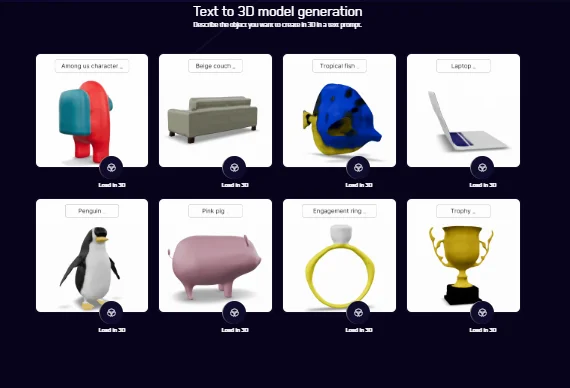
Alpha3D has carved out a niche in product-focused 3d ai generator applications. The platform specialises in creating high-quality product models that can perfectly perform their roles on e-commerce, marketing, and visualisation purposes.
Key Features:
- Specialized algorithms for product modeling
- High-detail surface texturing
- E-commerce integration capabilities
- Advanced lighting and staging options
Its ability to build models that can support proper proportions with realistic materials would be beneficial to any business that requires precise representation of products.
Best For: E-commerce businesses, product marketers, and companies needing accurate product visualizations for catalogs or online stores.
4. Tripo AI
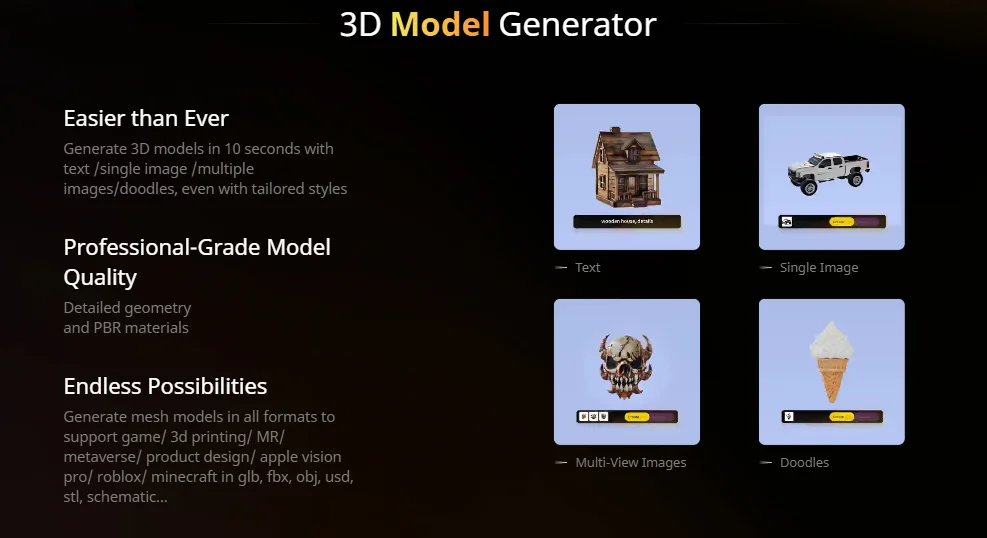
Tripo AI converts text prompts or viewing images into either 3D figures or video in just a few seconds, making its services wildly popular among independent developers and prototypers. The platform is fast and easy to use without its design being overly complicated.
Key Features:
- Ultra-fast generation times
- Clean, intuitive interface
- Direct integration with design pipelines
- Optimized for rapid iteration
Best For: Independent developers, startup teams, and anyone who needs quick concept models for presentations or early-stage development.
5. Masterpiece Studio
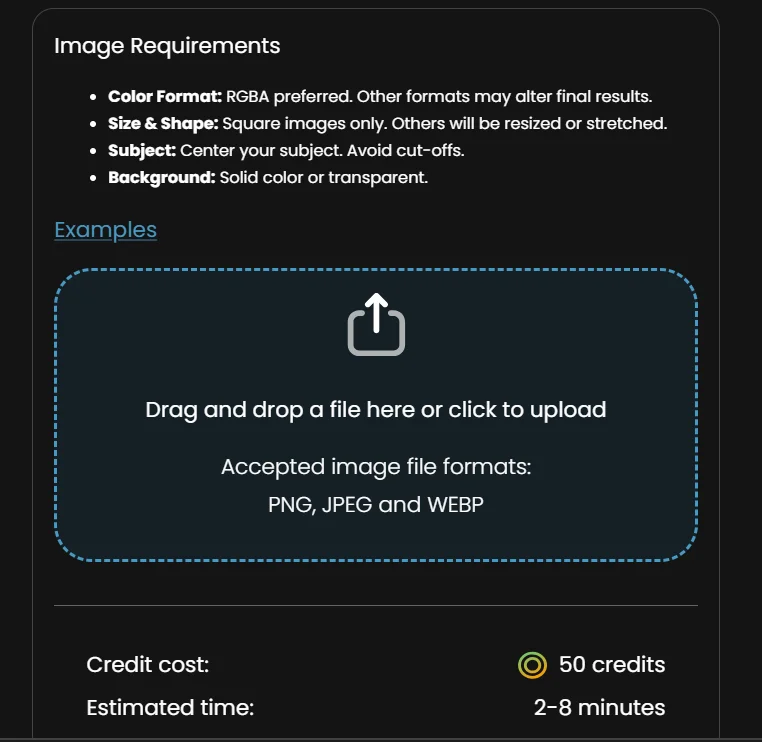
Masterpiece Studio has evolved with the use of advanced Natural Language Processing (NLP) technology, which takes descriptive language and turns it into a 3D model. The platform has been at the forefront of text-to-3D technology production.
Key Features:
- Advanced natural language processing
- Detailed prompt interpretation
- Professional-grade model output
- Extensive customization options
It is good at interpreting complex descriptions and creating correct 3D representations, thus being useful to creative people whose work involves working with conceptual descriptions.
Best For: Concept artists, writers working on visual projects, and creative professionals who prefer working with detailed text descriptions.
6. Rokoko Vision
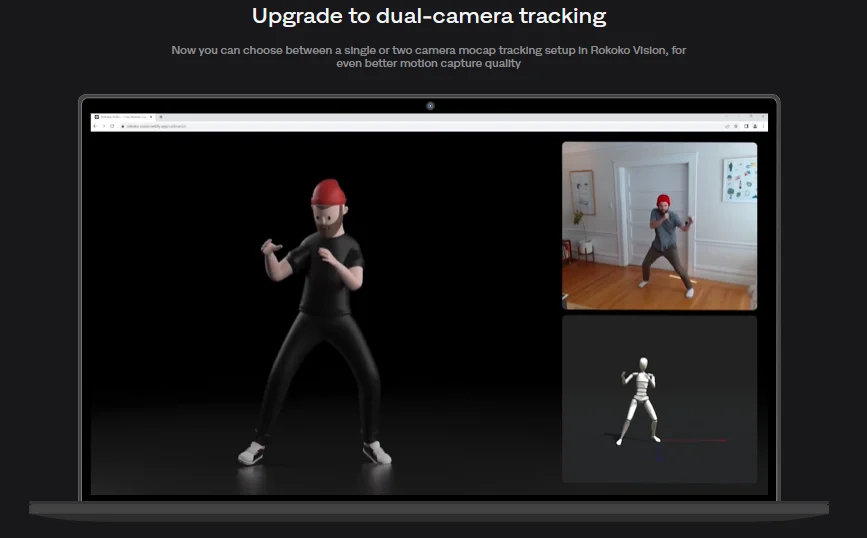
Rokoko Vision offers a unique approach as a free video-to-3D AI generator that allows users to record and preview motion capture data using just a computer’s webcam. This is a tool that fills the rift between 3D modelling and animation.
Key Features:
- Webcam-based motion capture
- Real-time preview capabilities
- Animation export functionality
- Character rigging automation
Best For: Animators, game developers, and content creators who need to add realistic movement to their 3D characters without expensive motion capture equipment.
7. Spline
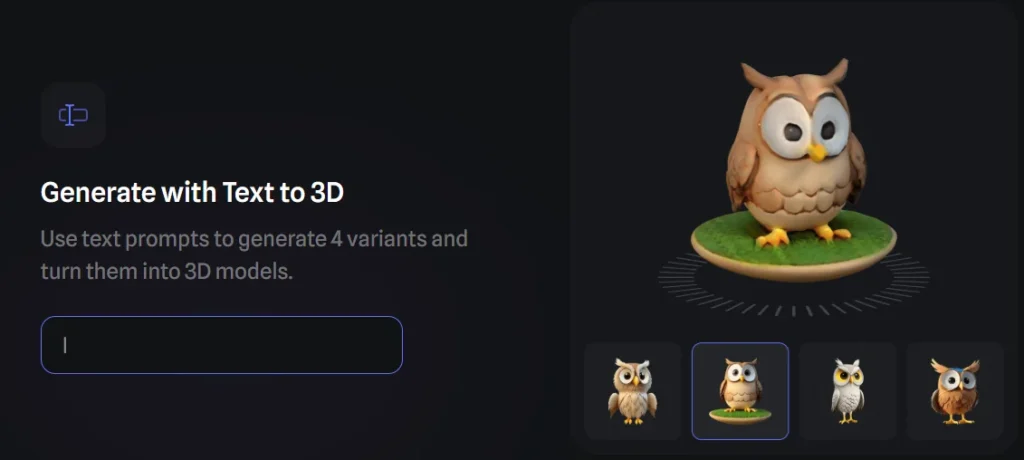
Spline focuses on creating interactive, web-ready 3D elements that can be embedded directly into websites and applications. The platform combines 3d ai generator capabilities with interactive design tools.
Key Features:
- Web-optimized 3D generation
- Interactive element creation
- Real-time collaboration features
- Direct web embedding capabilities
Spline excels at creating interactive, web-ready 3D elements, making it the go-to choice for web designers and developers who need 3D content for digital experiences.
Best For: Web designers, UI/UX professionals, and developers creating interactive web experiences with 3D elements.
Choosing the Right 3D AI Generator for Your Needs
The choice of the best ai 3d generator is based on a number of factors that coincide with your personal demands and workflow. Understand what you will use it mostly, how tech-savvy you are and what kind of 3D content you will use most often.
- For Speed-Focused Projects: If you need to generate 3d models quickly for prototyping or concept development, Meshy AI or Tripo AI offer the fastest generation times with reliable quality output.
- To cover all types of workflows: Teams needing to work on several creation modalities may want to take advantage of a naming combination, such as 3D AI Studio, which includes text-to-3D, image-to-3D and texture generation functionality within one tool.
- For Specialised Applications: Product visualisation requires Alpha3D’s specialised algorithms, while web-based interactive content works best with Spline’s web-optimised approach.
Integration and Workflow Considerations
Modern 3d ai generator tools are designed to fit seamlessly into existing creative workflows. To benefit, most platforms are compatible with standard 3D files such as OBJ, STL, and FBX, allowing compatibility with high-end programs such as Blender, Maya, and Unity.
Assess the export possibilities of the platforms and see if they suit the needs of your downstream workflow. With some tools, there is direct integration with the more popular game engines and design software, which can help to greatly simplify your production pipeline.
Most of these tools are cloud-based and therefore, they require a stable internet connection in order to be more efficient. The cost of accessing powerful computing facilities, however, is a trade-off against not having an expensive dedicated hardware investment.
Cost Analysis and Value Proposition
Depending on the platform, the pricing models of ai 3d generator vary widely, the majority being tiered subscription pricing based on usage limits and availability of features. Free tiers commonly hold basic features with restrictions on the number of generations or resolution.
Professional plans are more often enhanced in terms of higher resolution output, commercial usage rights, and priority delivery. Enterprise products can include added features of team-level collaboration, API access, and training-based custom models.
The savings in time compared to the traditional 3D modelling use should be taken into account when determining the total cost of ownership. The prices of premium subscriptions are often less expensive than the cost of hiring a professional 3D artist to perform the same amount of work.
Quality and Optimization Best Practices
Getting the best results from generated 3d models requires understanding how to craft effective prompts and optimise your inputs. Descriptive language that is clearer has better results as compared to vague or over-complicated descriptive language.
In image-to-3D generation, higher contrast images with defined subject boundaries tend to be more successful. Don’t use cluttered backgrounds, and have the reference image clearly depict the object in as many angles as possible.
Post-processing is a key element in most workflows. Although these applications produce impressive primary results, trivial topology, texturing or scaling changes can dramatically enhance the ultimate end results.
Industry Applications and Use Cases
3d AI generator tools have found applications across numerous industries, each leveraging the technology differently. These tools are used by game development studios to achieve fast asset and prototyping, and thus decrease the time spent on the development process.
Architecture and real estate practitioners use the abilities of an AI 3d image generator to construct shots of property, as well as staging the setting. Marketing teams can create product models to promote during the campaigns without costly photoshoots or 3D modelling contracts.
Education establishments are incorporating the tools into the design curriculum, enabling students to concentrate on the creative ideas instead of spending months understanding the technical fundamentals of complex 3D modelling software.
Future Trends and Developments
The 3d ai generator landscape continues evolving rapidly, with new capabilities emerging regularly. Future development will be on how to best optimise model topology, increase the quality of the textures, and augment animation features.
Integration with augmented reality (AR) and virtual reality (VR) platforms is a broader trend, as such tools can now be used to create content designed to be used in immersive experiences.
The ability to create collaborative materials and offer real-time editing opportunities enables teams to combine forces on 3D projects, whether they are stationed on the same continent or the opposite side of the world.
Frequently Asked Questions
Q: Can AI-generated 3D models be used for commercial projects?
A: Most platforms offer commercial licensing options through their paid plans. Always check the specific terms of service for your chosen platform to ensure compliance with commercial usage requirements.
Q: How long does it typically take to generate a 3D model using AI?
A: Generation times vary by platform and complexity, but most modern tools create basic models within 1-3 minutes. More detailed models with textures might take 5-10 minutes depending on the platform and current server load.
Q: Do I need 3D modeling experience to use these tools effectively?
A: While prior 3D experience helps optimize results, these tools are designed for users without extensive technical backgrounds. Most platforms provide tutorials and guidelines to help beginners achieve good results quickly.
Q: What file formats do these AI generators support for output?
A: Most platforms support standard formats including OBJ, STL, FBX, and GLTF. Some specialized platforms may offer additional formats optimized for specific applications like game development or 3D printing.
Q: Are there completely free 3D AI generators available?
A: Several platforms offer free tiers with basic functionality, including limited generations per month. Rokoko Vision provides free motion capture capabilities, while others like Meshy AI and 3D AI Studio offer free trials with basic features.
